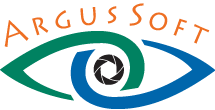
Software for quality evaluation of metals and alloys
The program allows automatic analysis of thin sections of metals, steels, alloys and cast iron in accordance with Russian and international standards (GOST, ASTM, ISO). To obtain the results according to different standards once is enough to analyze the sample, and then recalculate the measurement data to represent the results in a different standard.
Analysis of materials for each of directions is realized in the form of methods included in the software.
- The set of standard delivery includes methods providing work considering the following standards:
Analysis of grain in the steels and alloys. GOST 5639, Steels and Alloys. Methods of Revelation and Determination of the Grain Size for Materials with a Single-Phase Structure. GOST 21073.1, GOST 21073.2 Colored Metals. Determination of Grain Size. ASTM E 1382. ASTM E 930. ASTM E112. ISO 643; - Analysis of Streak Nonmetallic Inclusions. ASTM E 1122. ASTM E 45;
- Analysis of Nonmetallic Inclusions:
*In accordance with DIN 50602;
*In accordance with ISO4957;
*In accordance with GOST 1778, ASTM E 1245, ASTM E 45; - Analysis of Graphite in the Iron. GOST 3443. Casts of Iron with Various Form of Graphite. Methods of Structure Detection. ASTM A 247;
- Interrelation of Phases. GOST 8233 Steel. Samples of Microstructure;
- Analysis of Layer Thickness. GOST 1763. ASTM 1077. ISO 3887;
- Analysis of Micro-hardness. ASTM E 384. ASTM E 92. GOST 9450;
- Analysis of Sponginess. GOST 9391. Solid Sintered Alloys. Methods of Sponginess and Microstructure Detection;
- Methods not included in the set of standard delivery:
*Analysis of carbide inhomogeneity Methods SEP 1520. Metallographic testing method of carbide inhomogeneity in the steels using representative scales;
*Methods NMV – TU 14-1-5319-96. Section for Boiler Tubes;
*Methods GOST 801-78. Bearing Steel. Technical Specifications; - As a result of analysis, a report is formed which is subject to printing. In addition to the software, forms of reports prepared in accordance with the selected standard are delivered. If necessary, the user may change a standard form of report or create a new one to provide results of analysis in the form admitted at his/her enterprise.
Received results as well as representative images can be stored in the data bases, built into the software.
 English
English Русский
Русский